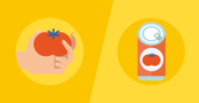- Threshing: Separating grain from its stalk.
- Winnowing: Removing chaff from grain.
- Milling: Grinding grain into flour.
- Teacher: Admin User
Moodle is an open-source Learning Management System (LMS) that provides educators with the tools and features to create and manage online courses. It allows educators to organize course materials, create quizzes and assignments, host discussion forums, and track student progress. Moodle is highly flexible and can be customized to meet the specific needs of different institutions and learning environments.
Moodle supports both synchronous and asynchronous learning environments, enabling educators to host live webinars, video conferences, and chat sessions, as well as providing a variety of tools that support self-paced learning, including videos, interactive quizzes, and discussion forums. The platform also integrates with other tools and systems, such as Google Apps and plagiarism detection software, to provide a seamless learning experience.
Moodle is widely used in educational institutions, including universities, K-12 schools, and corporate training programs. It is well-suited to online and blended learning environments and distance education programs. Additionally, Moodle's accessibility features make it a popular choice for learners with disabilities, ensuring that courses are inclusive and accessible to all learners.
The Moodle community is an active group of users, developers, and educators who contribute to the platform's development and improvement. The community provides support, resources, and documentation for users, as well as a forum for sharing ideas and best practices. Moodle releases regular updates and improvements, ensuring that the platform remains up-to-date with the latest technologies and best practices.
Links of interest:

his course provides students with the fundamental knowledge and hands-on skills necessary for professional food production. It covers basic cooking methods, kitchen organization, ingredient handling, menu planning, food safety, and modern culinary techniques used in commercial kitchens.
By the end of the course, students will be able to:
Understand the structure and functioning of a professional kitchen.
Identify, handle, and prepare ingredients using appropriate methods.
Apply principles of basic and advanced cooking techniques.
Maintain hygiene, safety, and sanitation standards.
Demonstrate plating, portion control, and presentation skills.
Understand menu planning and food costing concepts.
Overview of the culinary profession
Types of food service establishments
Hierarchy and staffing in the kitchen (Classical Brigade)
Roles and responsibilities of kitchen staff
Kitchen layout, tools, and equipment
Food safety principles (HACCP, cross-contamination prevention)
Personal hygiene and grooming
Cleaning and sanitation procedures
Fire safety and first aid in kitchens
Classification of food commodities (cereals, pulses, fruits, vegetables, meats, dairy, etc.)
Storage and preservation methods
Identification and uses of herbs, spices, and flavorings
Stocks, sauces, and soups – classification and preparation
Dry-heat methods (roasting, baking, grilling, frying, etc.)
Moist-heat methods (boiling, poaching, steaming, stewing, etc.)
Combination methods (braising, sautéing)
Effect of cooking on nutrients and flavor
Egg cookery and breakfast preparations
Vegetable and pulse dishes
Meat, poultry, and fish preparations
Basic bakery and confectionery items (breads, pastries, desserts)
Types of menus (à la carte, table d’hôte, cyclic, etc.)
Principles of menu planning and meal balancing
Portion control and yield management
Food cost calculation and control measures